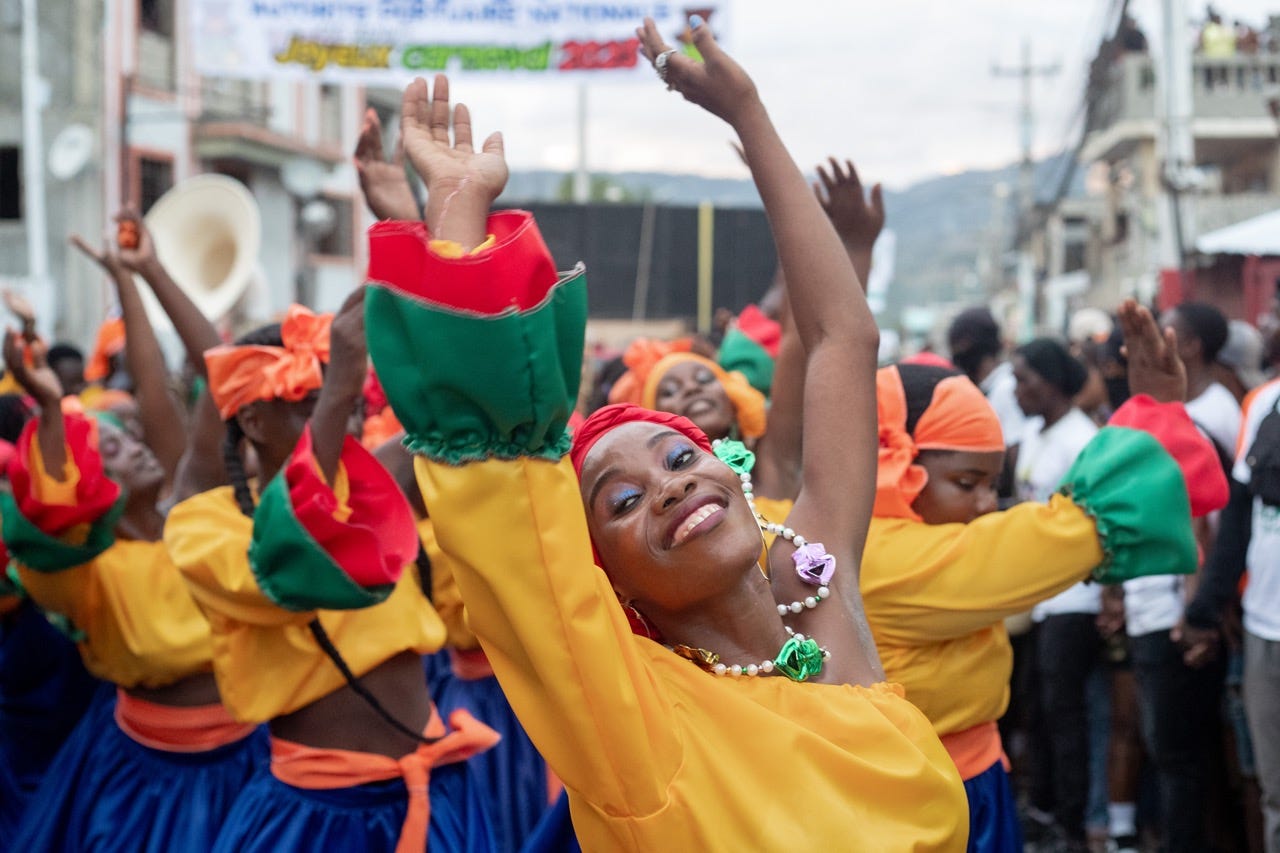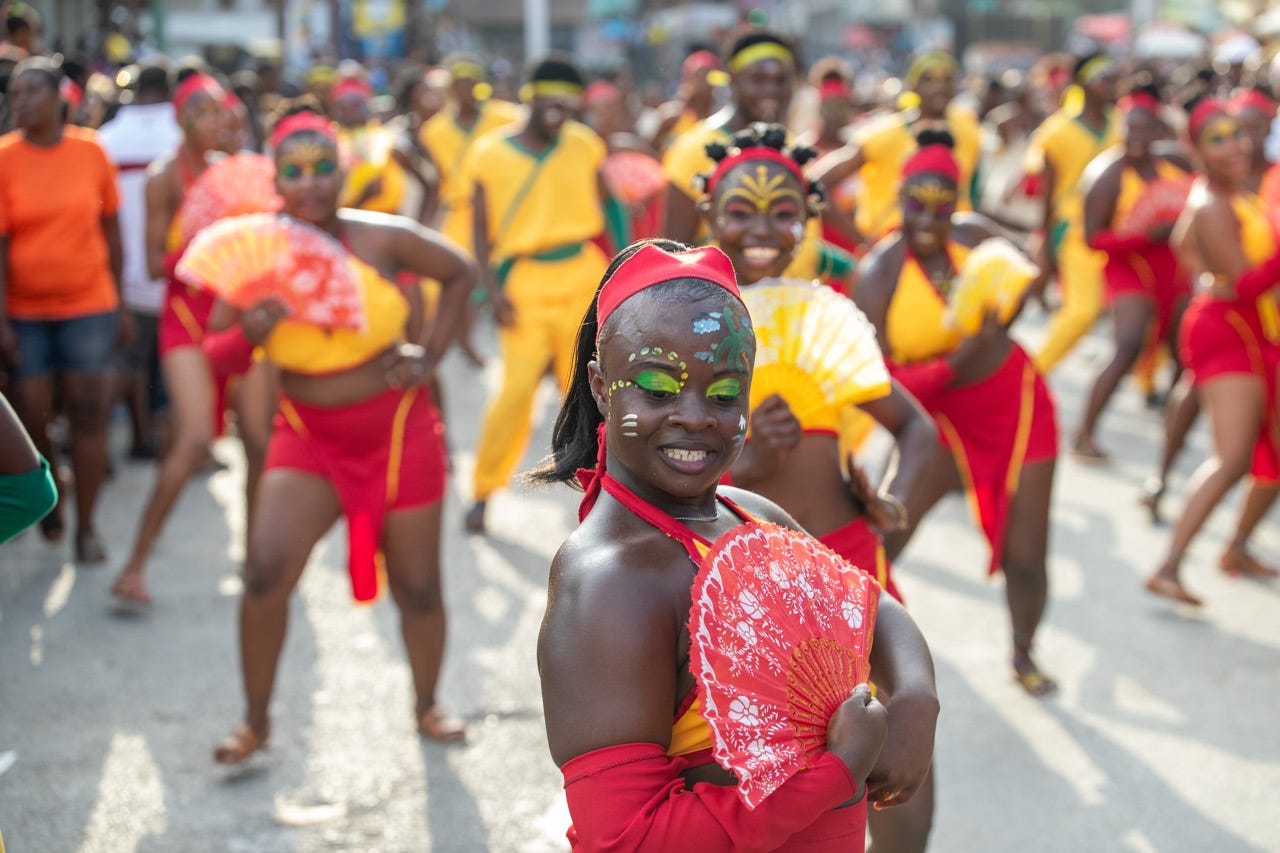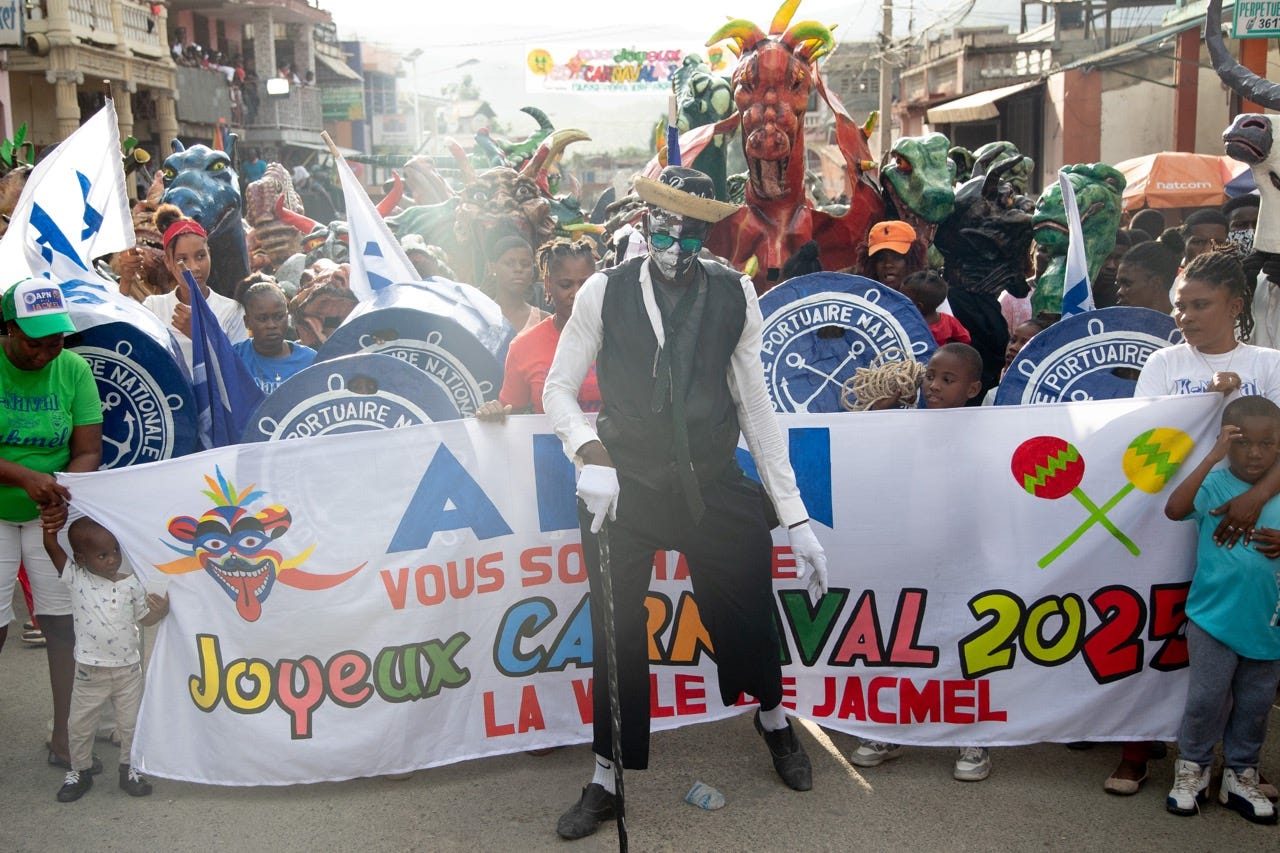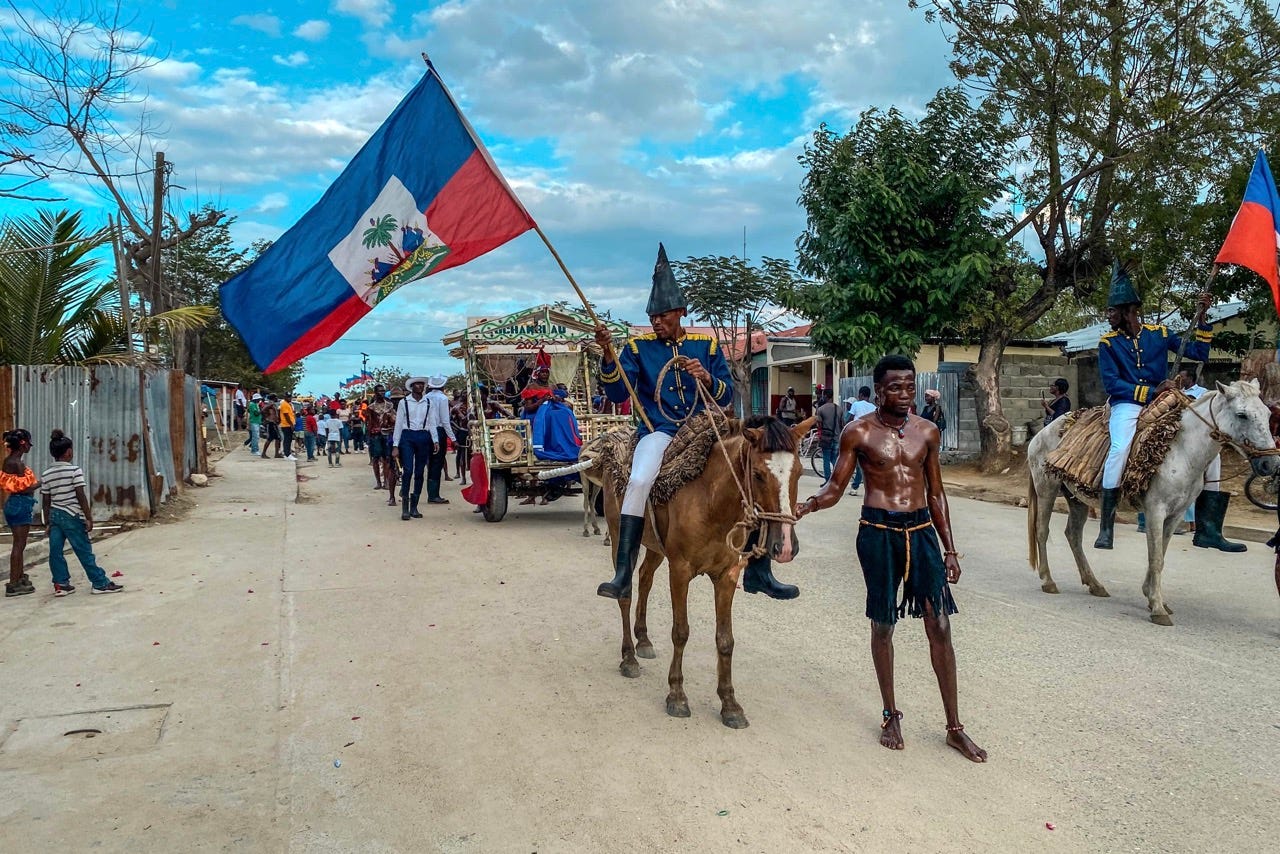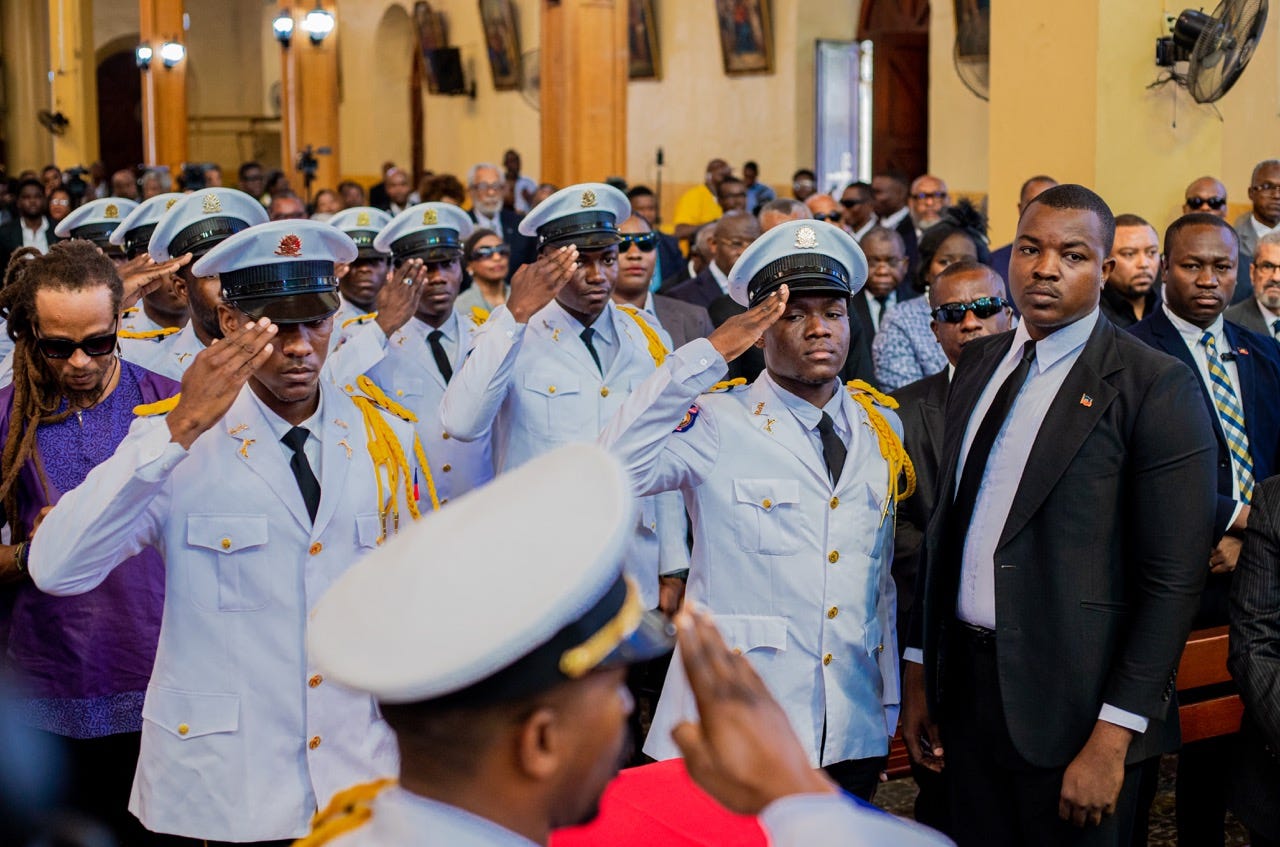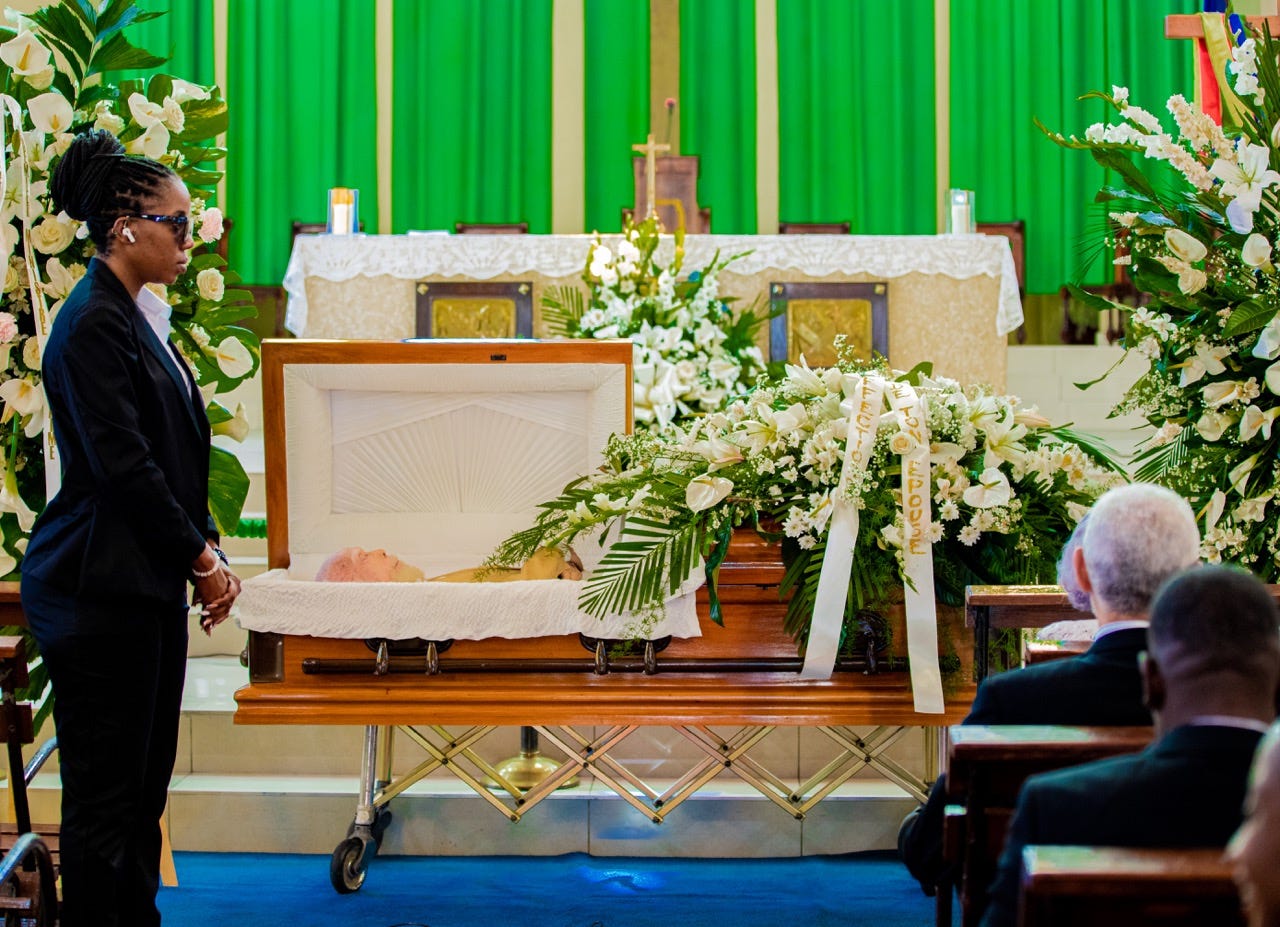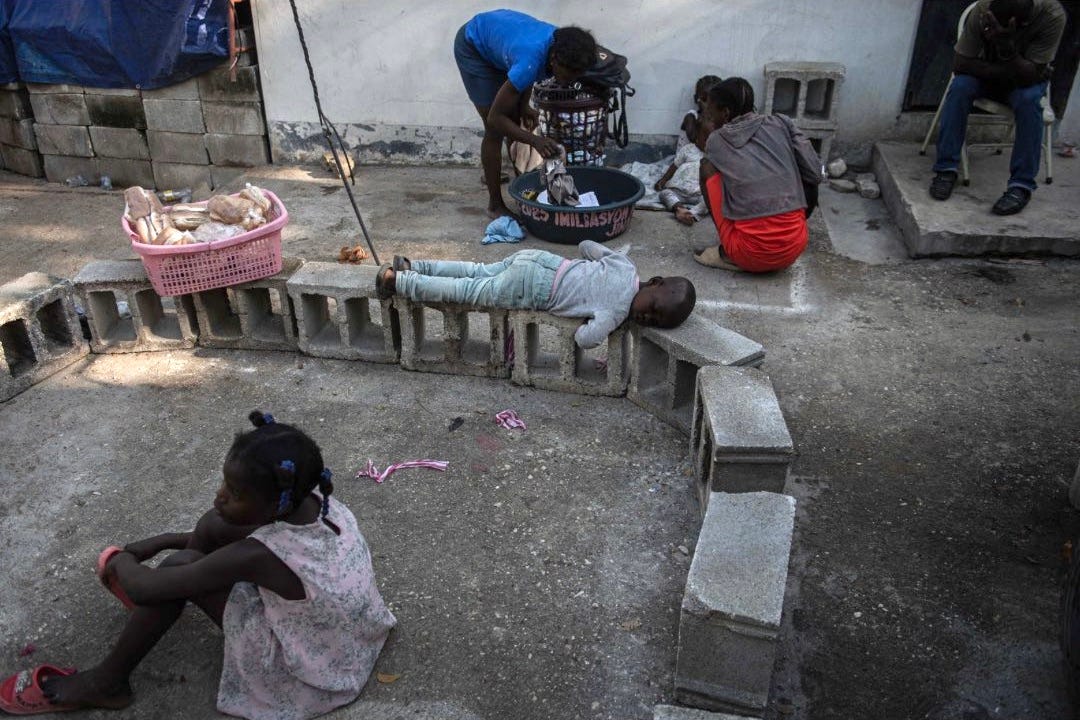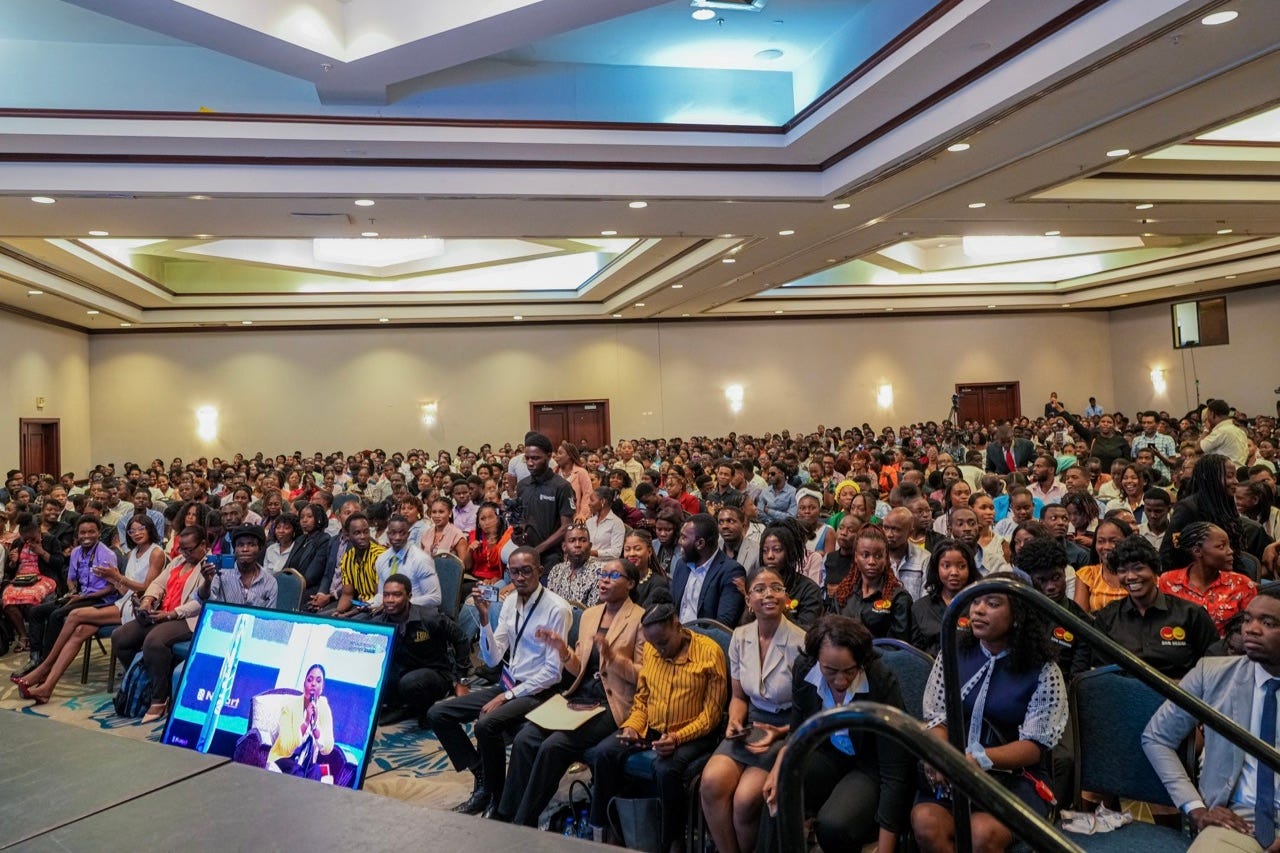#51 - CARNIVAL 2025 PHOTOS: Revolt celebrates in Jacmel
Jacmel in revolt mode, Fort-Liberté against adversity, Cayes-Jacmel to the rhythm of the band-a-pied, national farewell to Frankétienne, Mebel Brun in love and anguish in Port-au-Prince
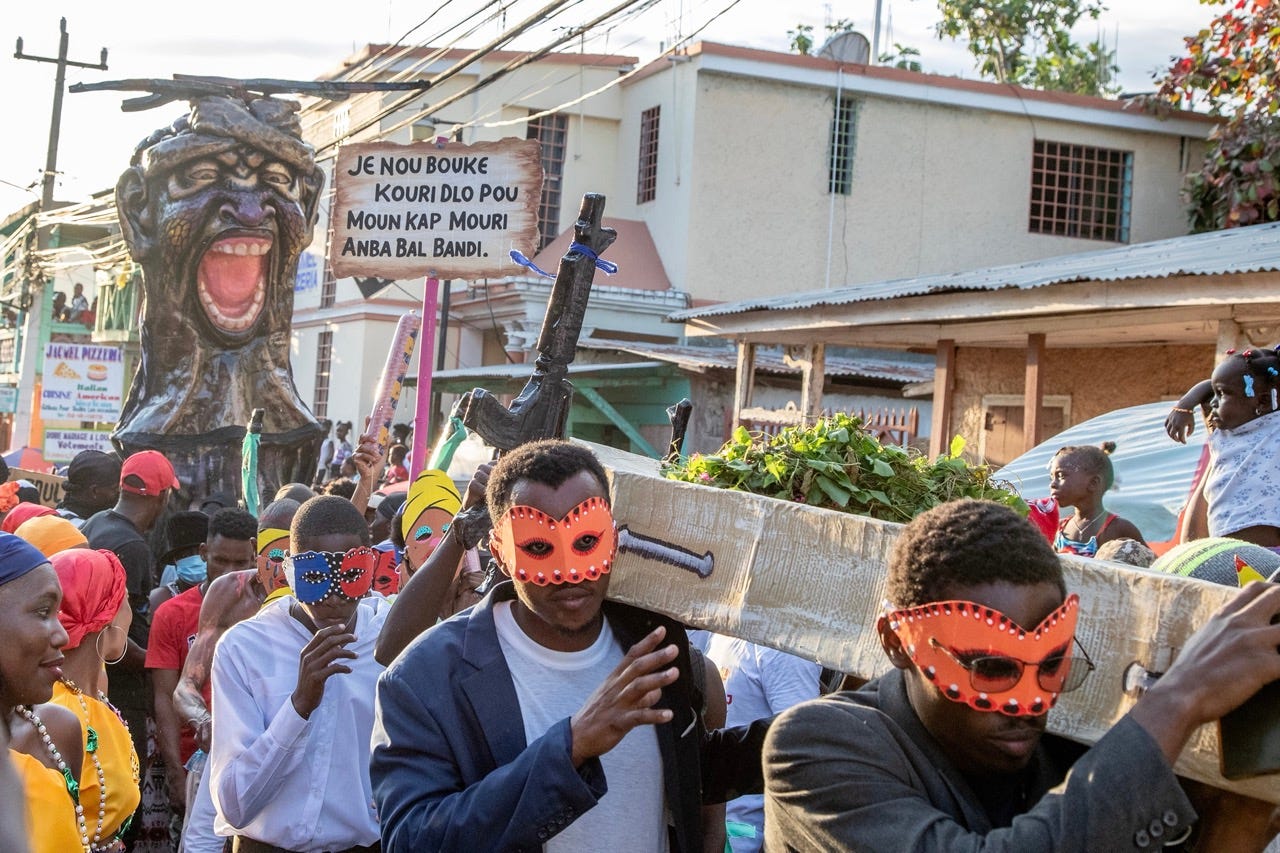
The security crisis in the Haitian capital inspired the artists of Jacmel's famous carnival, known for their critical spirit. Despite the virtual absence of tourists, Jacmelites gathered in large numbers to admire their work and enjoy a festive moment. This and more in HAITI WEEKLY #51 by DÈYÈ MÒN ENFO.
Summary #51
Jacmel Between Tradition and Revolt
Fort-Liberté: Celebration Against Adversity
Cayes-Jacmel to the Rhythm of the Band-a-pied
Frankétienne, a National Farewell to a Legend
Music Video of the Week : Moun mwen by Mebel Brun
Flee or Suffer: the Anguish of Port-au-Prince Residents
Press Review
Jacmel Between Tradition and Revolt
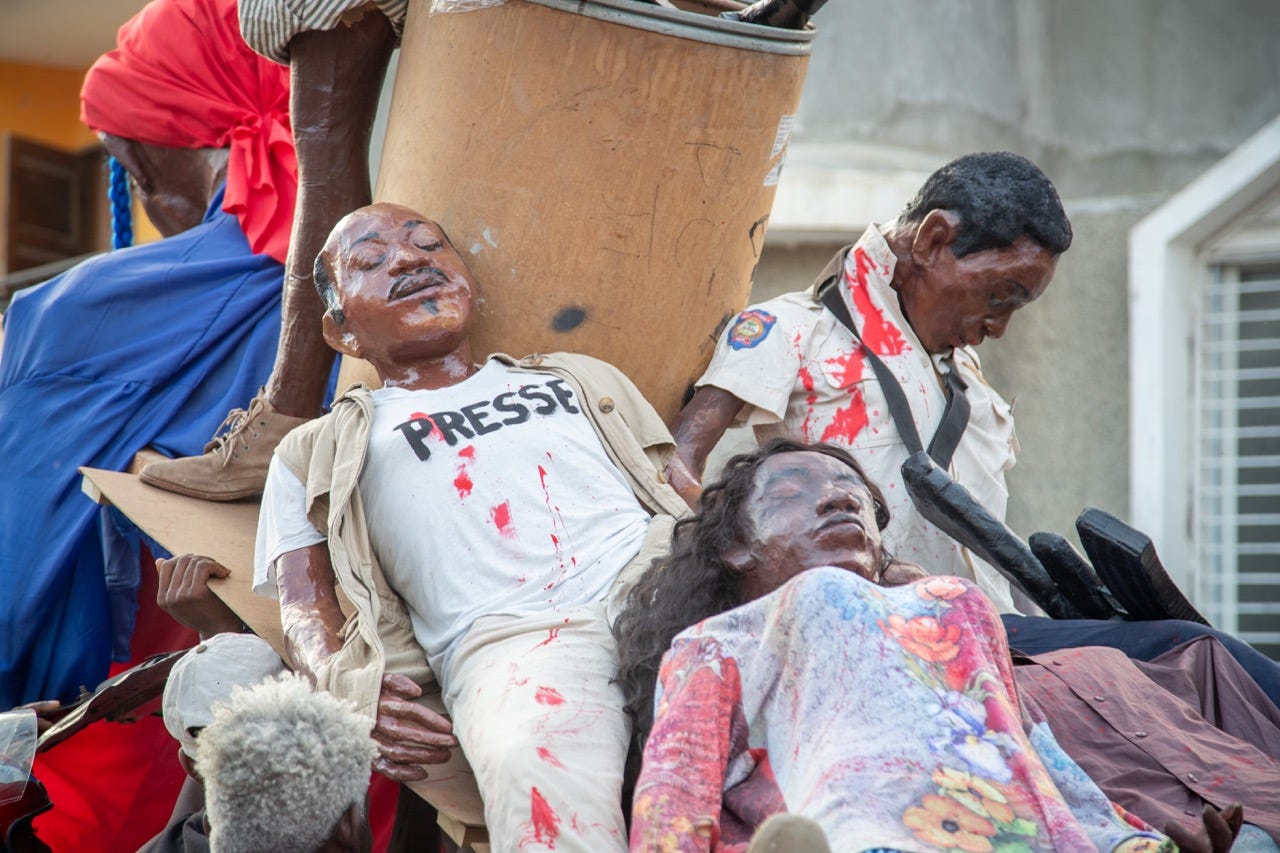
In addition to the masks of mythical figures emblematic of carnival, papier-mâché coffins and machine guns also took the streets this year to denounce the violence that has plagued the capital and its surroundings. The police, mostly depicted in papier-mâché, were joined by armed groups, which in turn became carnival icons in this city famous for its carnival crafts.


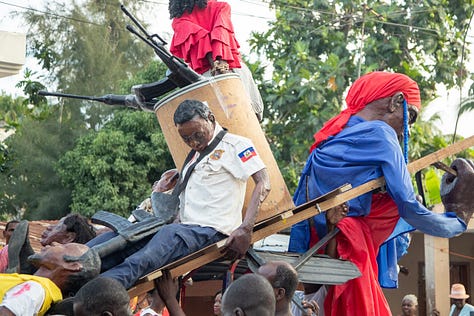
The artist Vady Confident and his team also presented a striking scene to denounce the insecurity that extends from the capital to the gates of the South-East. Away from the official carnival, they used papier-mâché to depict merchants, policemen and journalists shot by bandits armed with automatic rifles.
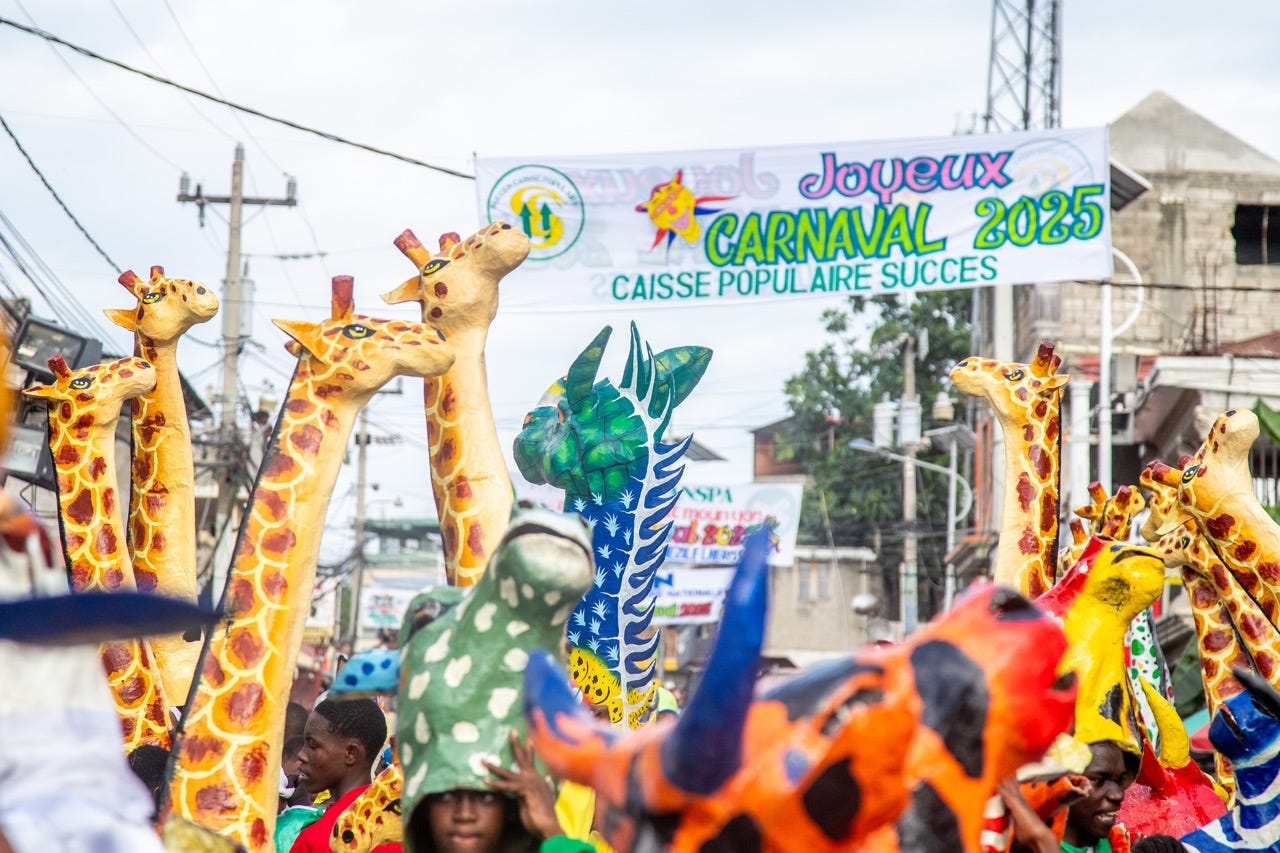
Jacmel's official carnival takes place one week before the national carnival. However, many artisans continue the festivities until the three days before Shrove Tuesday.
The official parade took place on Sunday, February 23, in front of a colorful crowd of mostly local residents. At 2 p.m., dance groups and papier-mâché masks took to the stage.
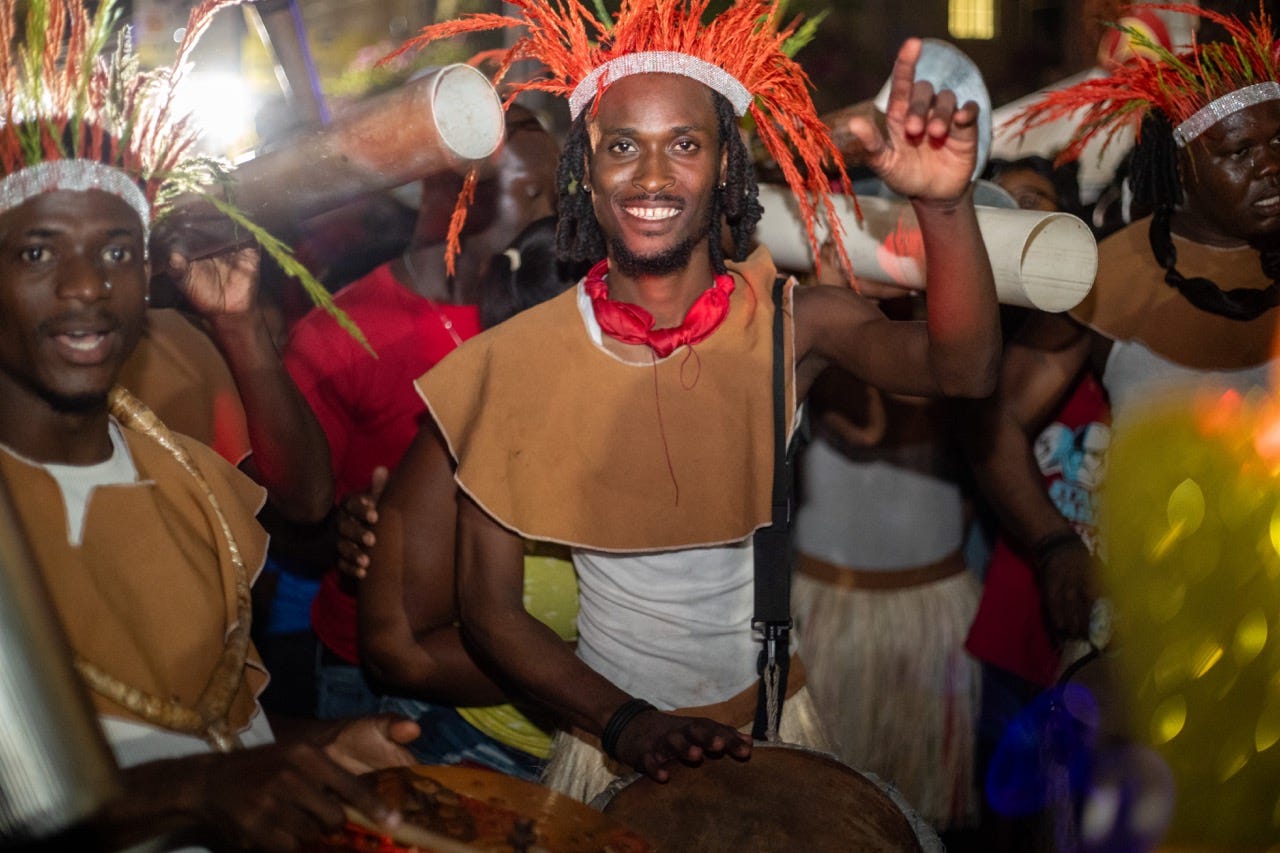
At the first parade, the atmosphere was family-friendly, punctuated by the dances and choreography of mythical carnival characters.
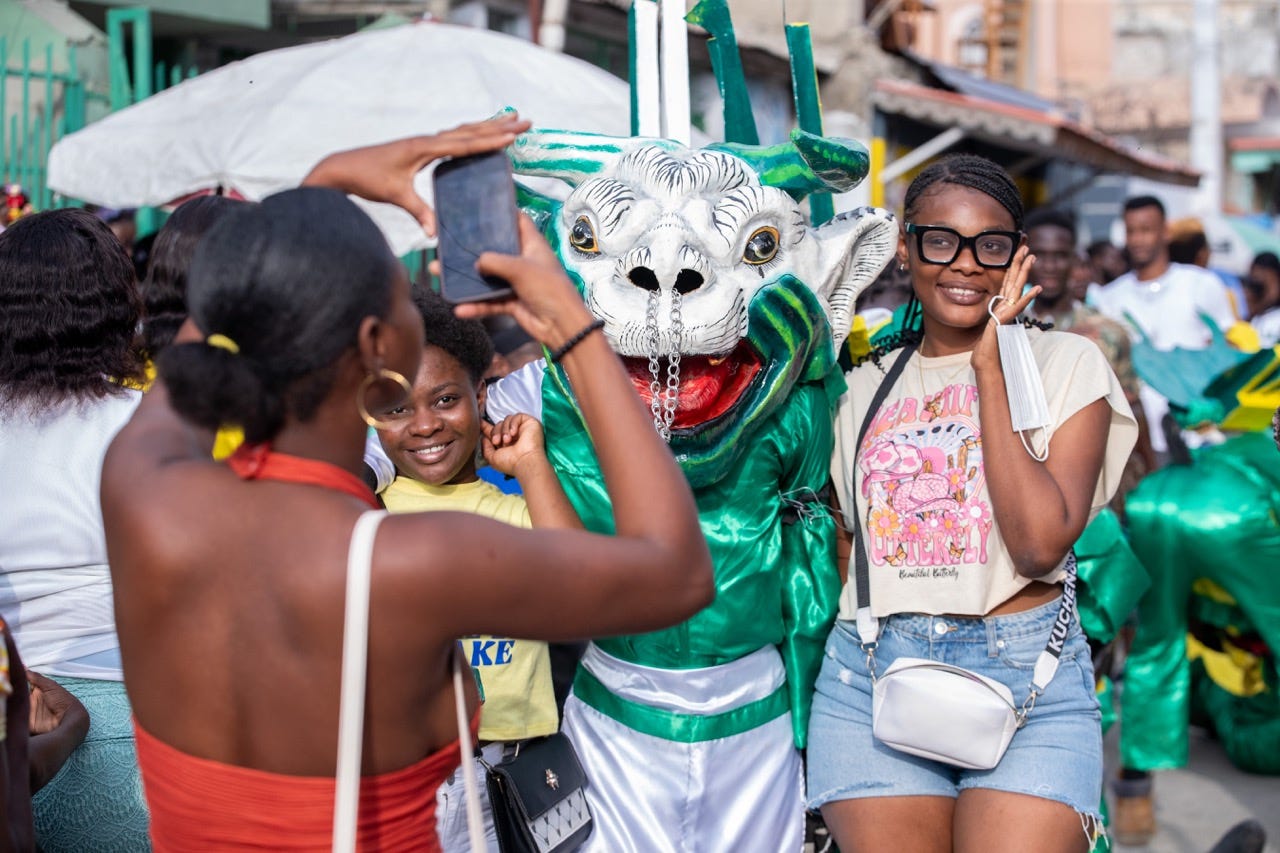
Among these figures, the “dyab” (devil) is undoubtedly the best known, with its masks of evil features. Some dyab, called zèl, wear wings specially designed to make a sonic clacking sound when struck together.
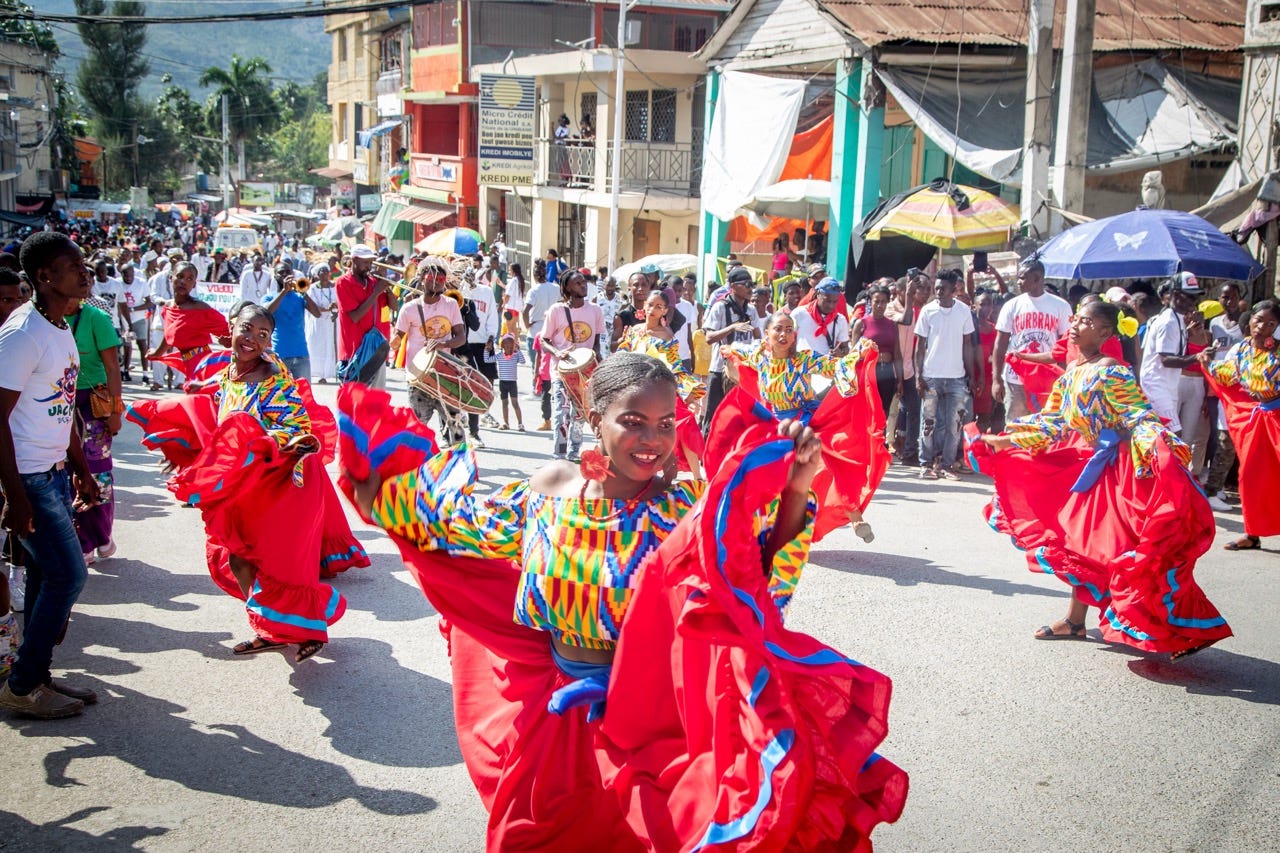
At the end of the main street, on a wooden platform, is the jury that will choose the winners of the different categories.
In the evening, the brass bands took over, more dynamic than ever. Each band-a-pied represented a district or area of the region, and marched with its own theme music.
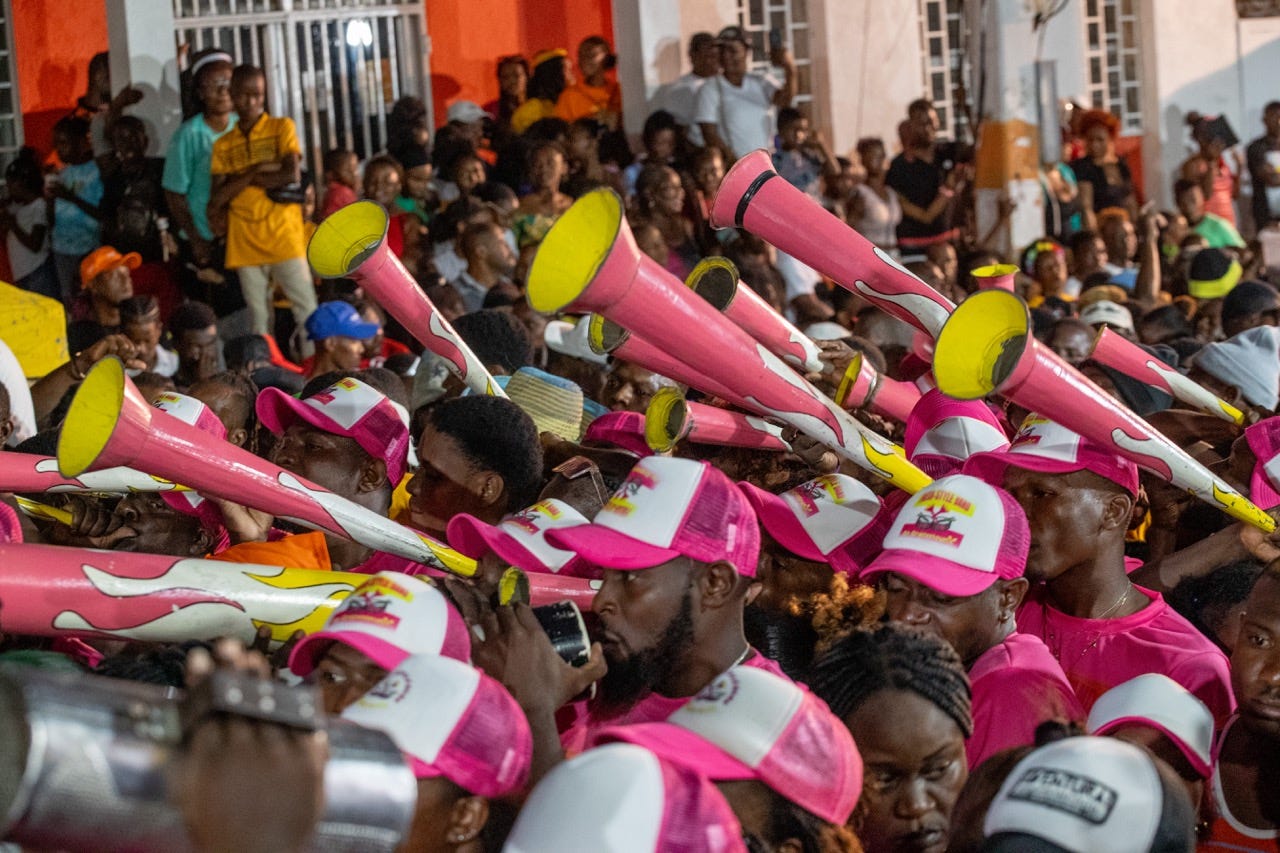
Dozens, even hundreds of people follow each group, dancing to the rhythm of the drums.
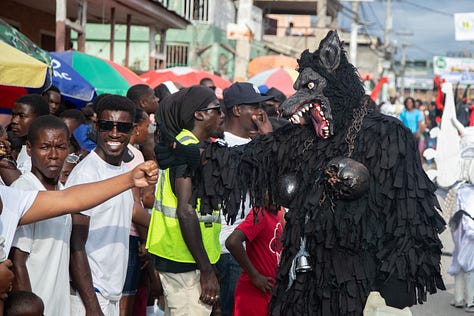
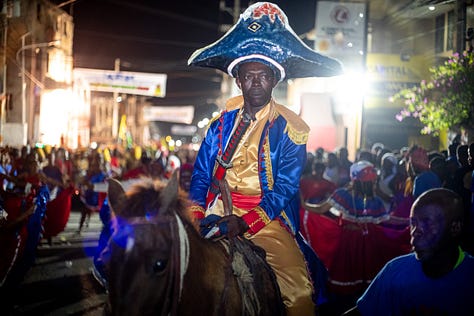
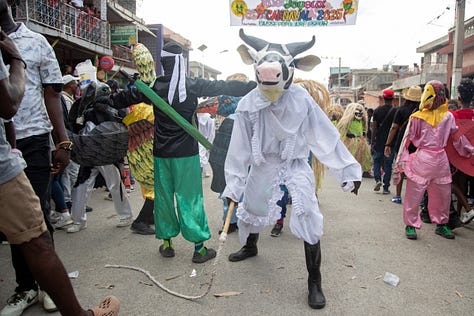

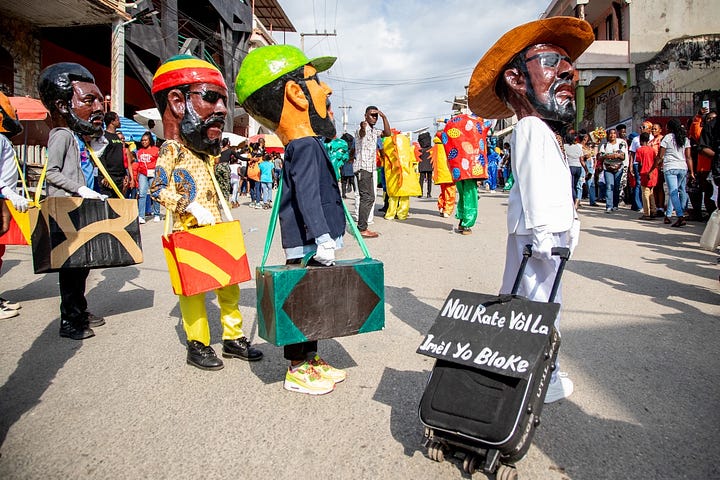
Band-a-pieds are composed mainly of percussionists and players of the kone (pronounced “coné”), a single-note trumpet.
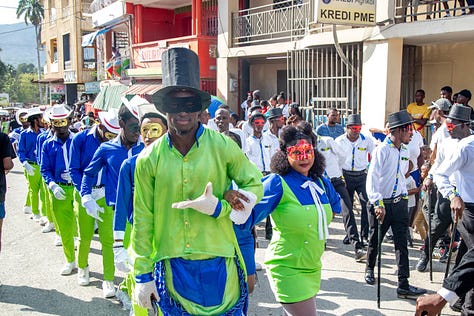
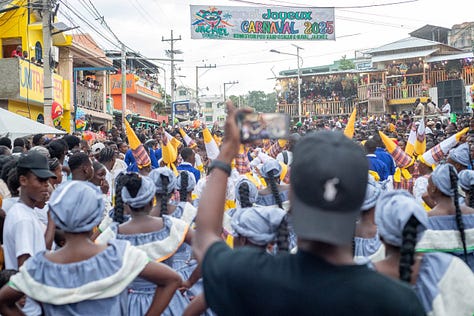

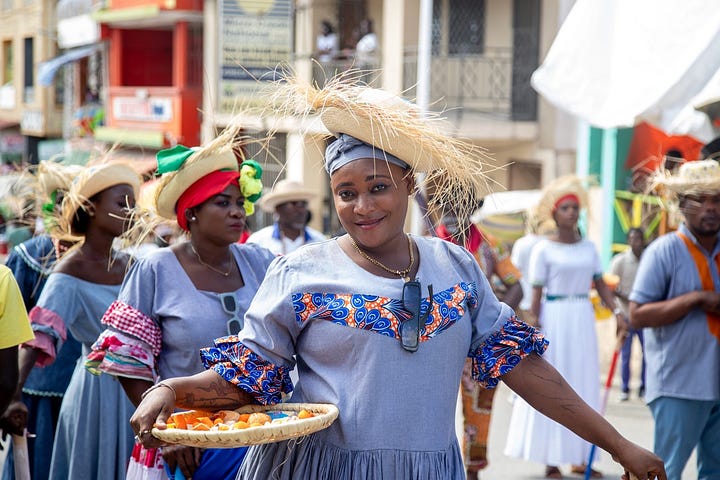
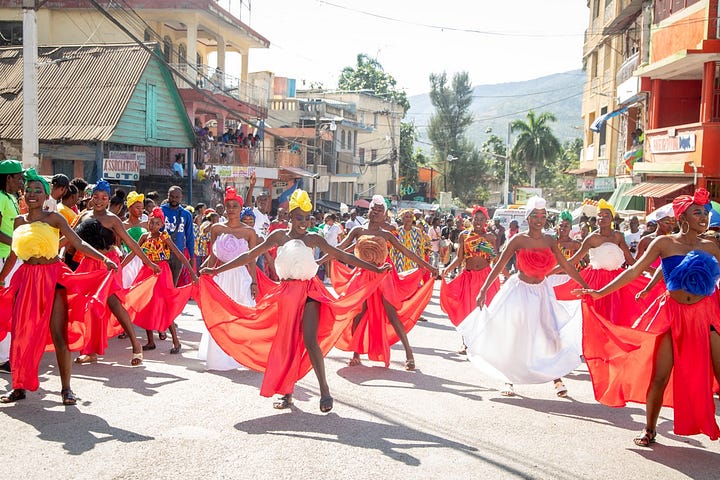
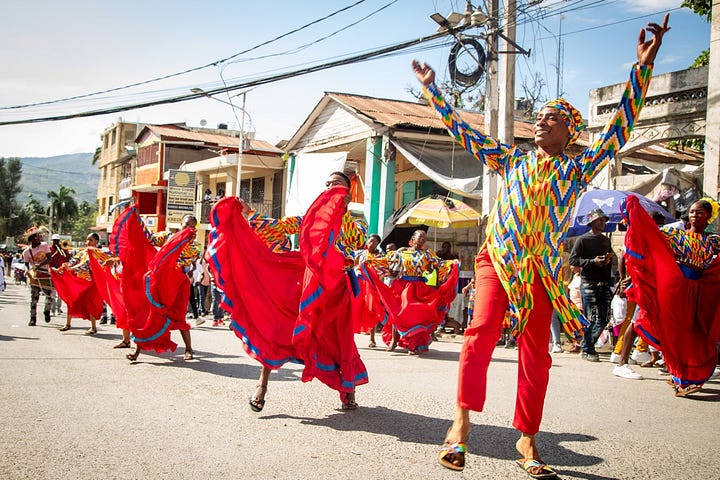

To play a melody, each musician must intervene at the right moment, which requires perfect group coordination.
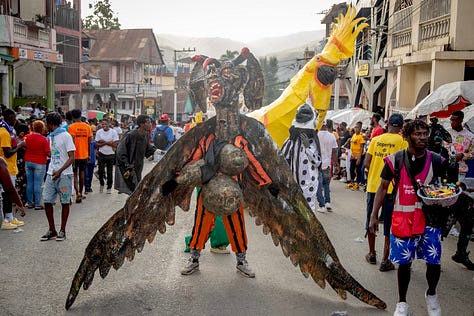

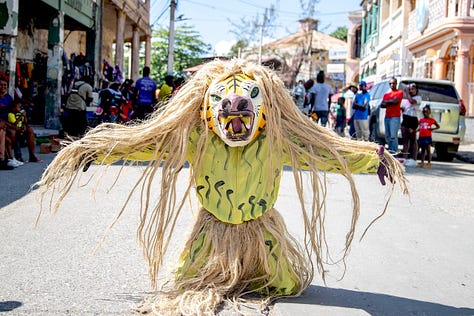
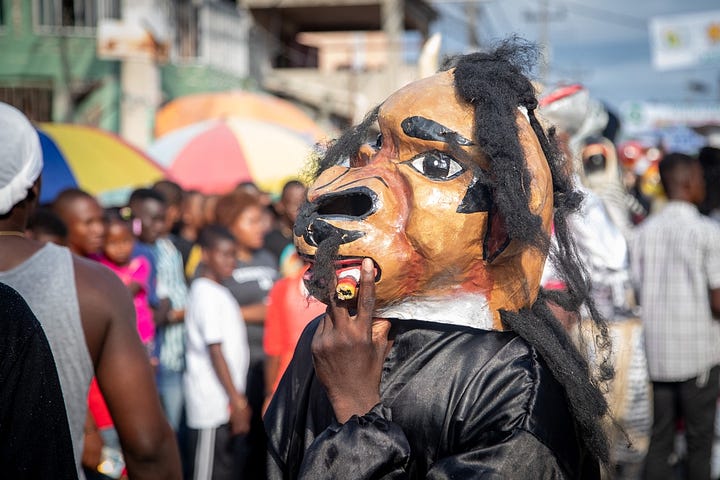

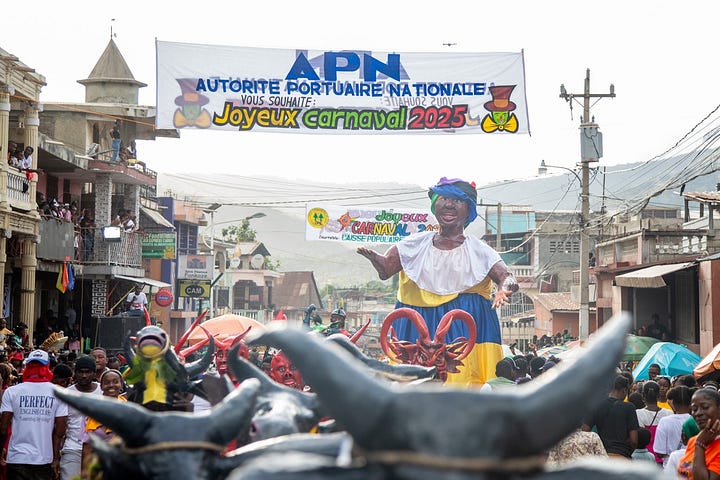

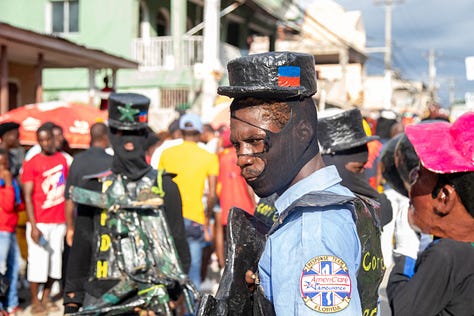
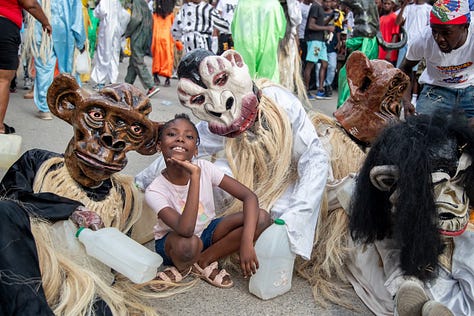
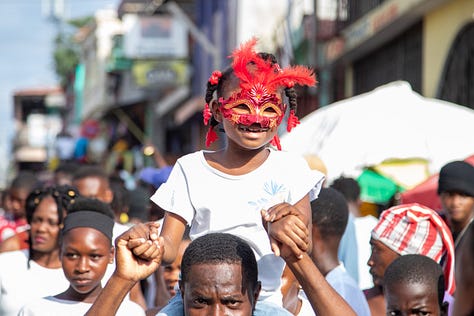



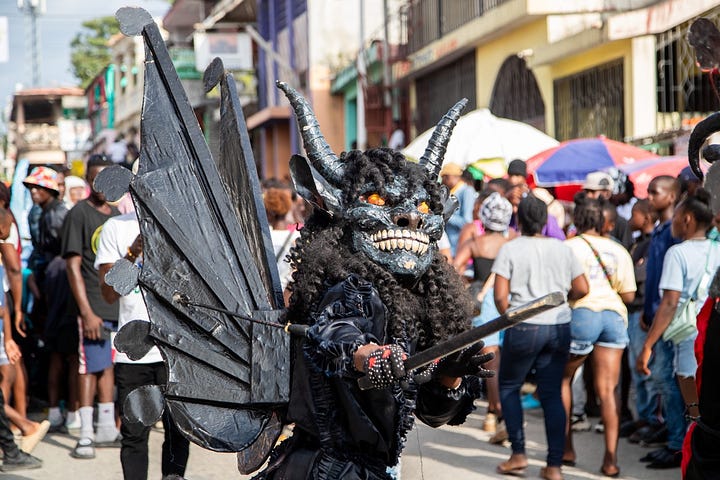
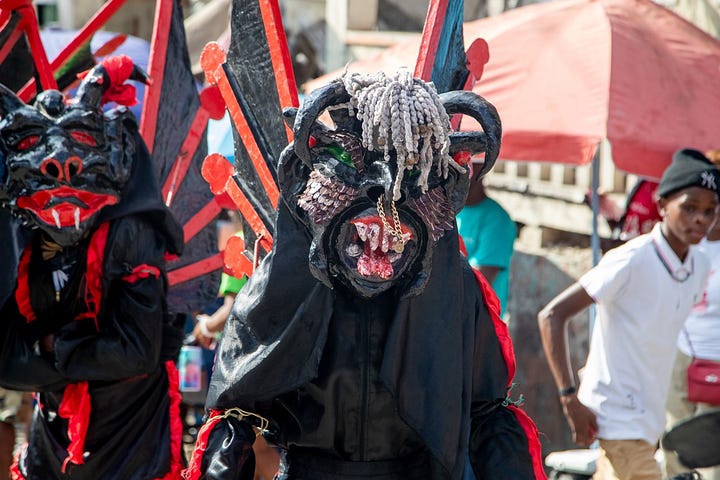
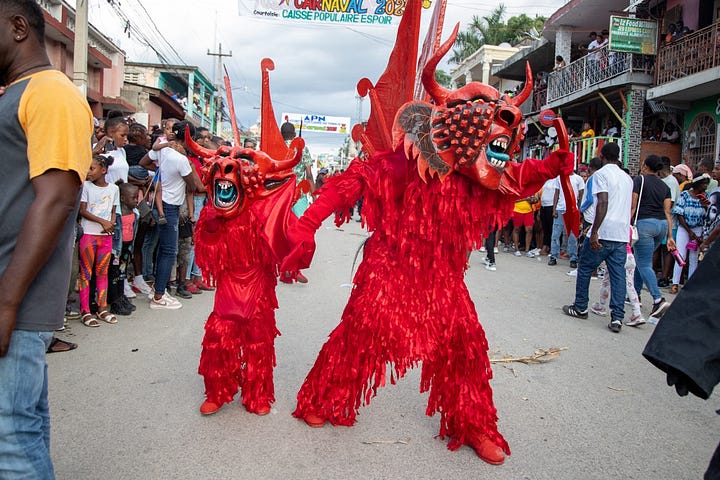
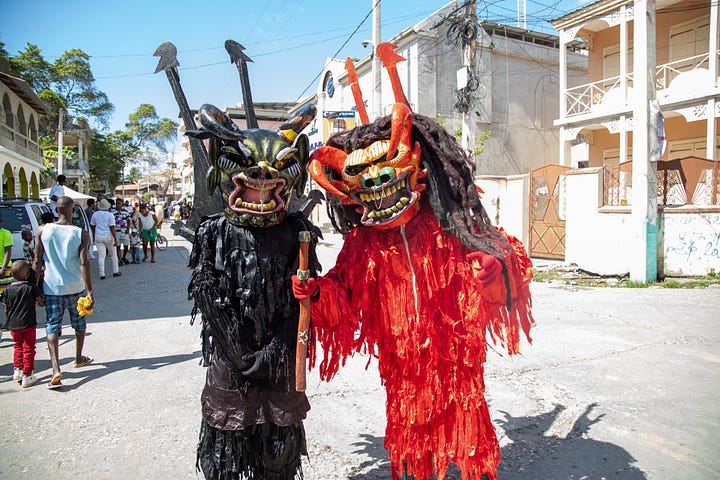


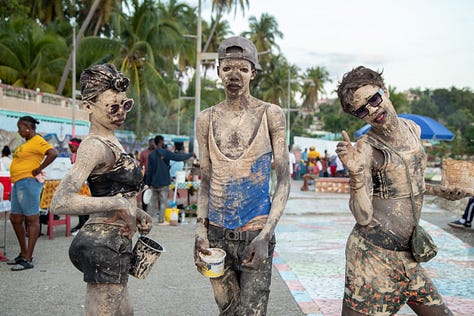



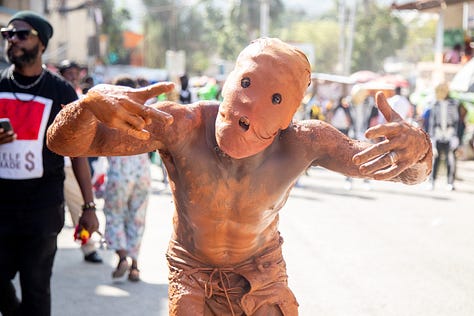
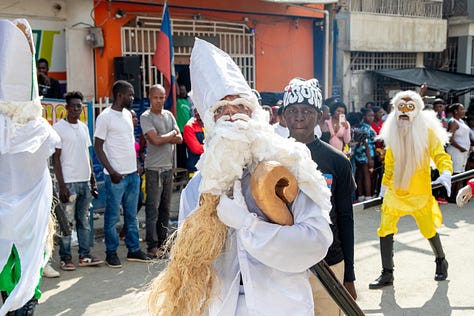

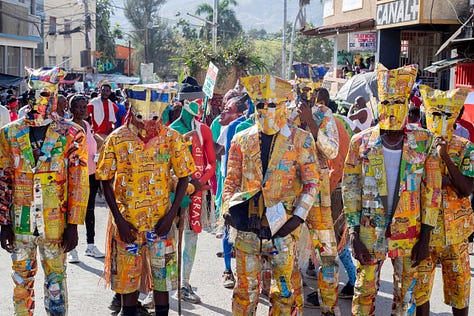
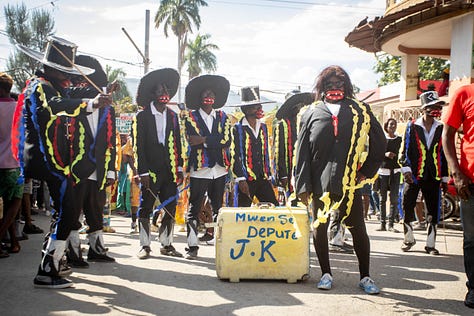
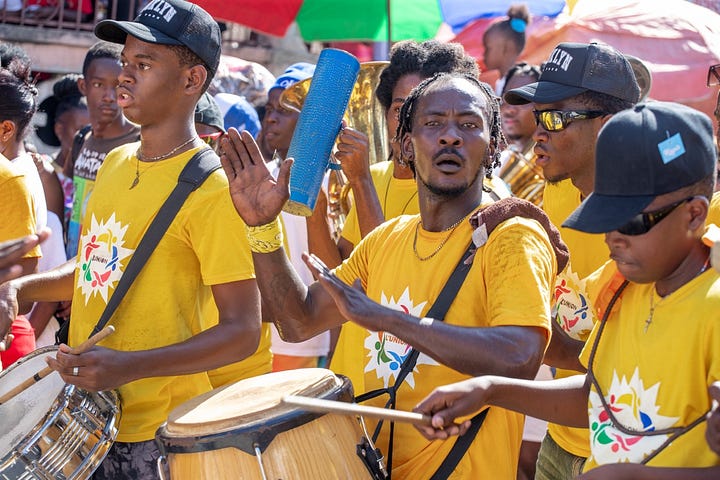
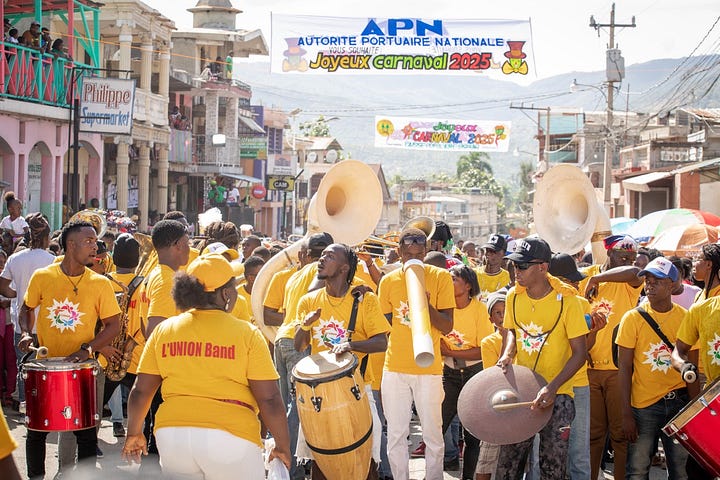



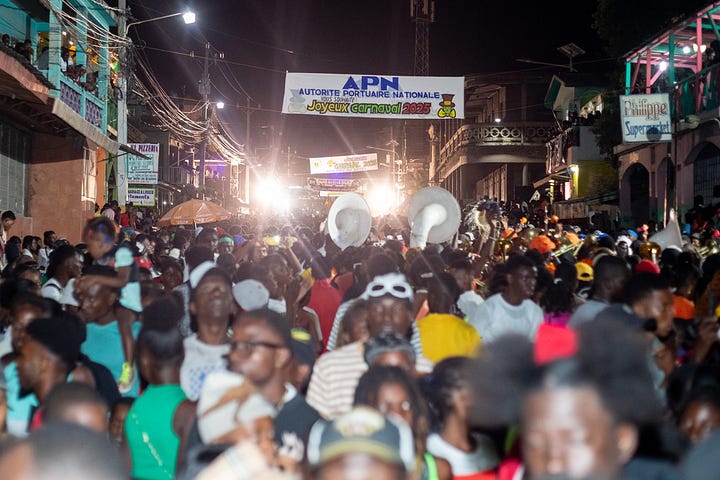
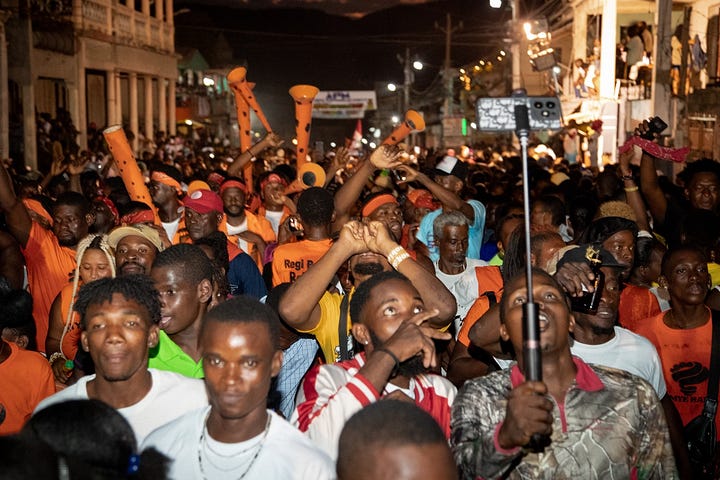

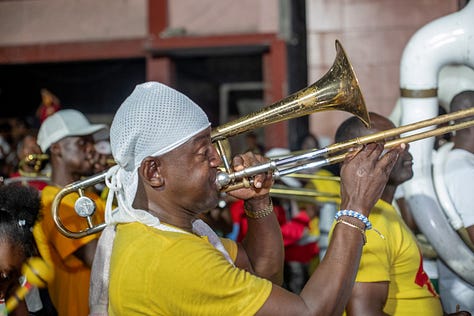

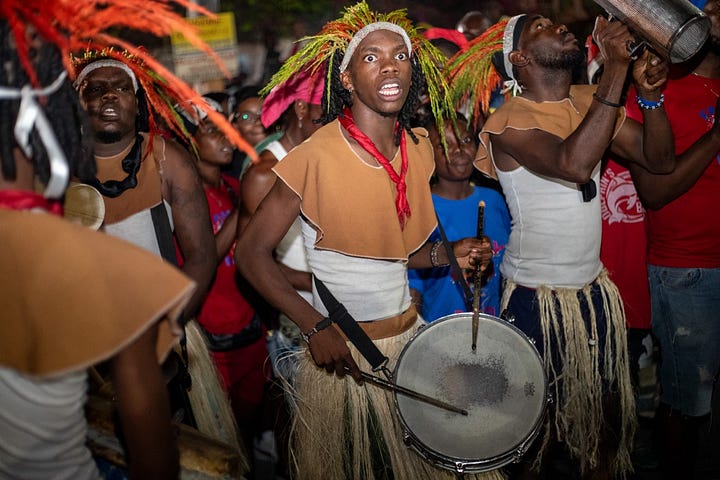
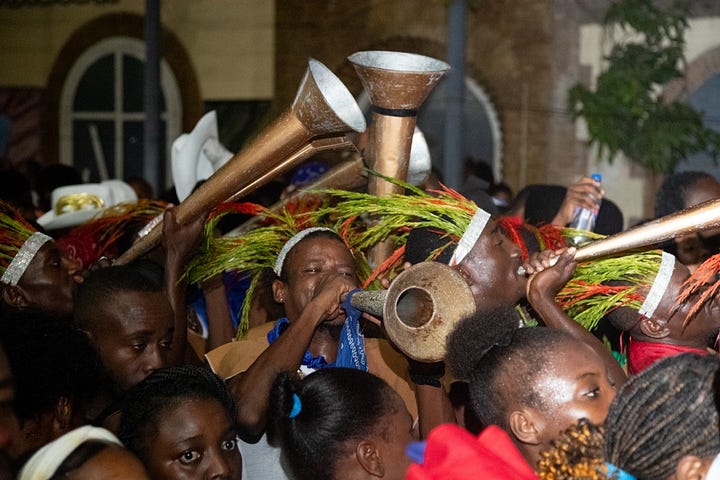

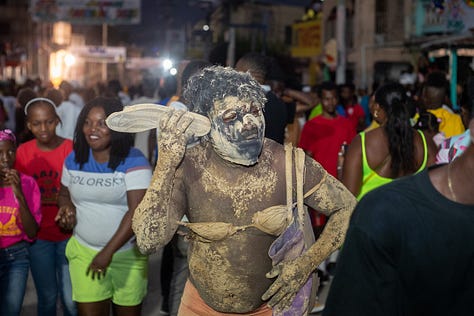

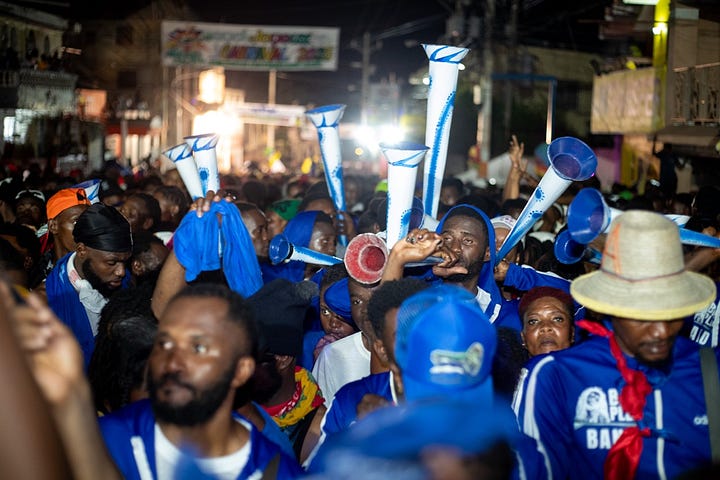
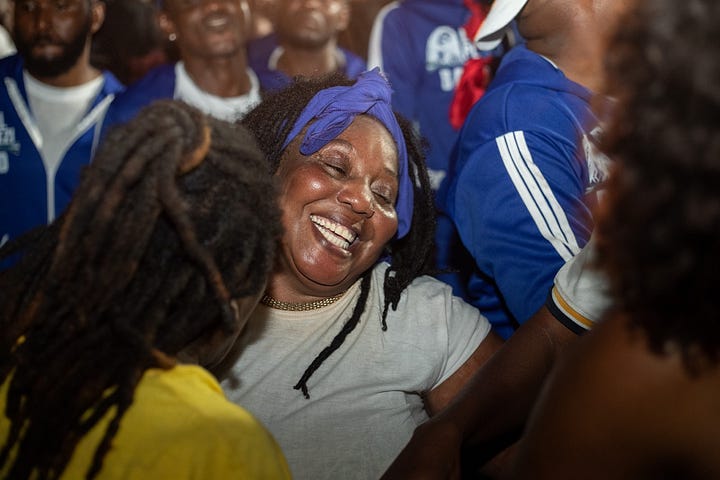


Fort-Liberté: Celebration Against Adversity
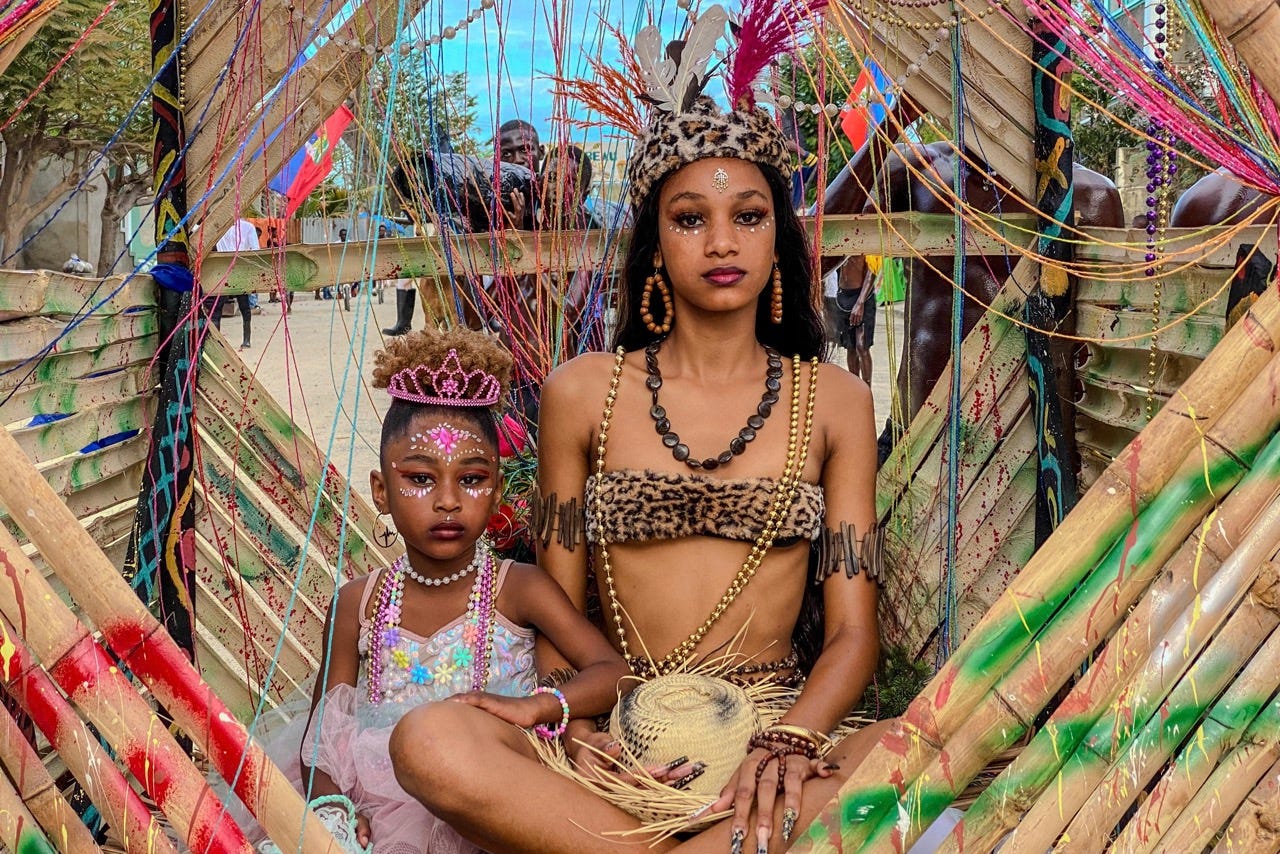
The town of Fort-Liberté, designated to host the national carnival, finally lost its funding after the Haitian prime minister gave in to critics who denounced the incoherence of such a budget in the midst of a crisis.
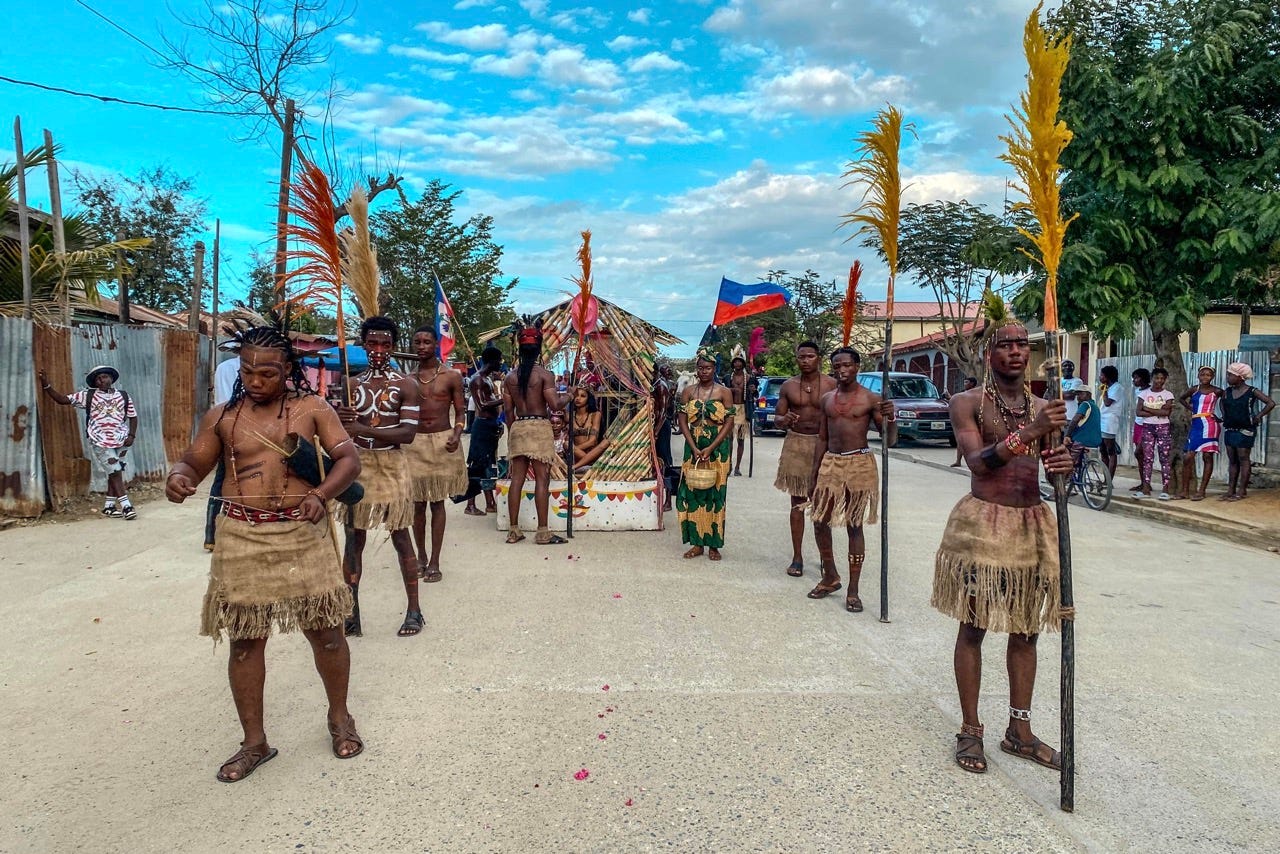
Despite this last-minute change of heart, the local authorities maintained a more modest carnival, but one that was just as popular with the people.
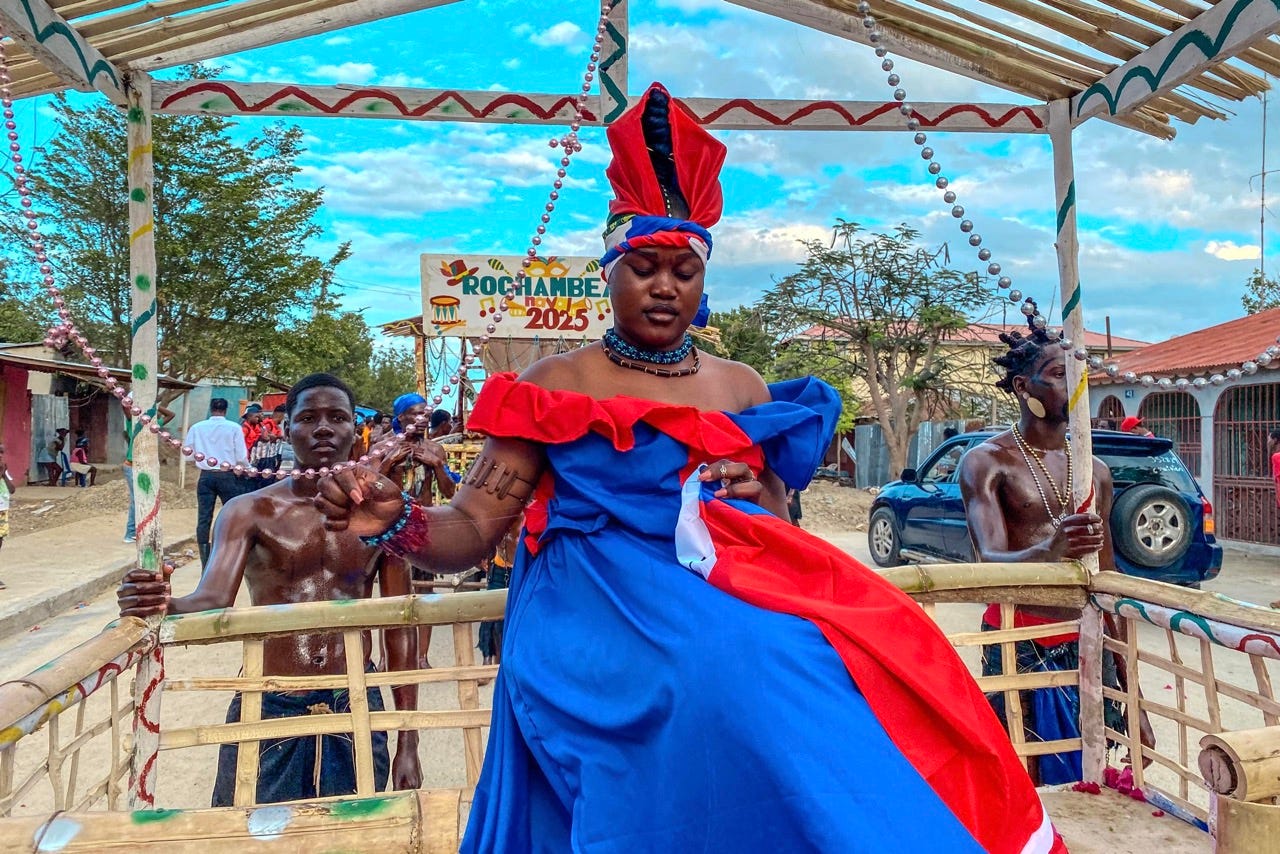
In the afternoon, three large floats paraded alongside smaller convoys. One float was dedicated to the traditional Carnival King and Queen, while another paid tribute to Haitian police officers.
In the evening, several brass bands from the North-East took over. A little later, three konpa bands direct from Cap-Haïtien - Septentrional (Monday), Tropicana (Tuesday), and Anbyans (Monday and Tuesday) - set the crowd on fire with their floats.
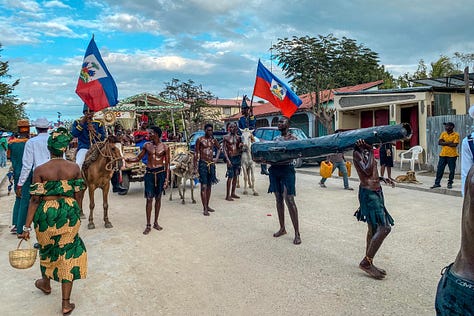

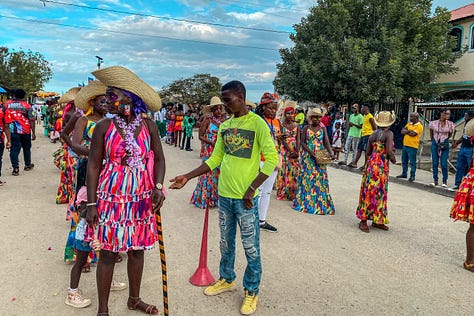

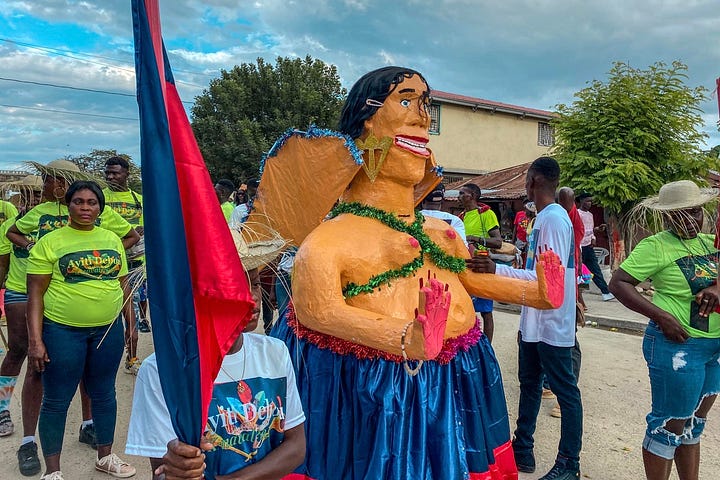
Cayes-Jacmel to the Rhythm of the Band-a-pied
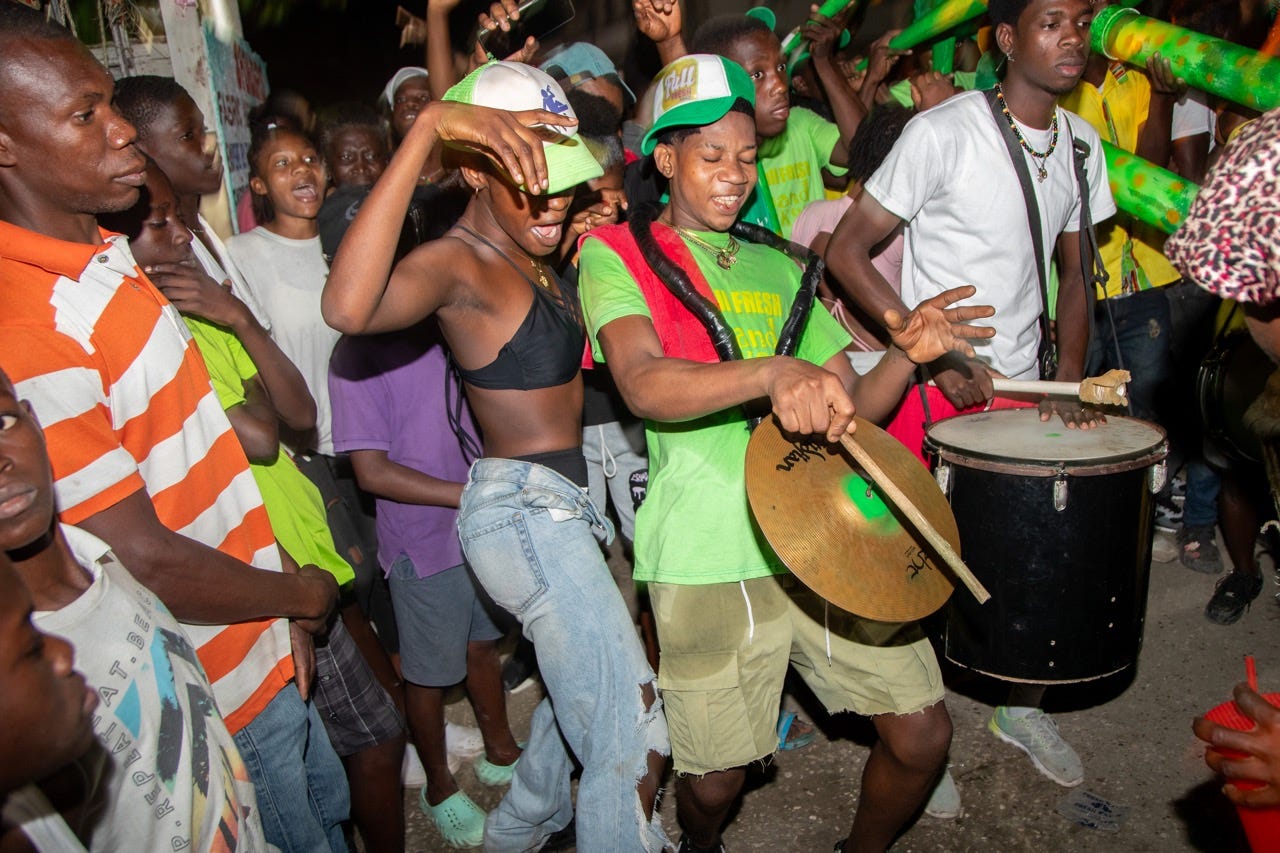
Jacmel's neighbor, Cayes-Jacmel, also celebrates Carnival, especially during the three “Shrove Days”. Two stages are set up on the main street, where a succession of local musicians perform.

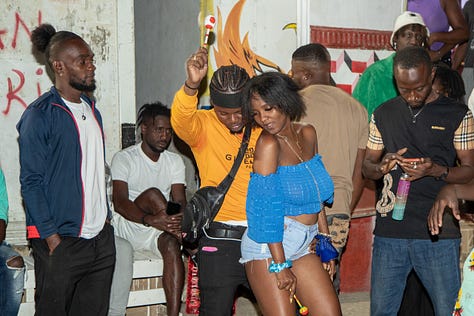

Each passing fanfare interrupted the artists' program to make way for street music.

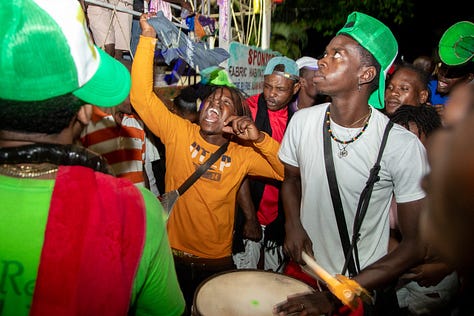






True carnival stars, the band-a-pied drew crowds as they paraded through the city.
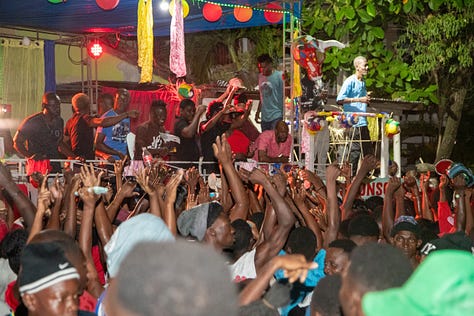
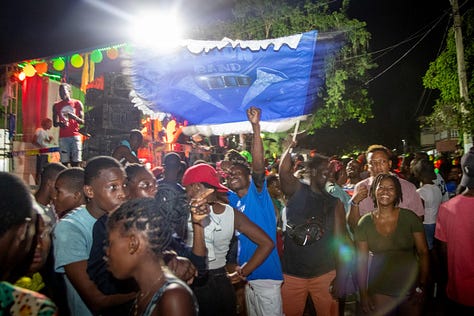
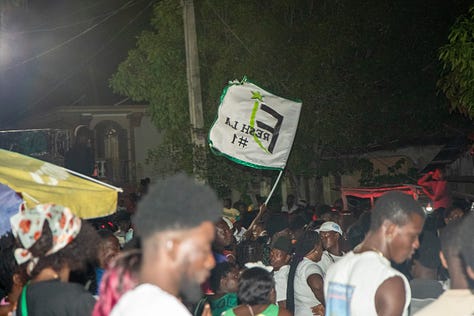

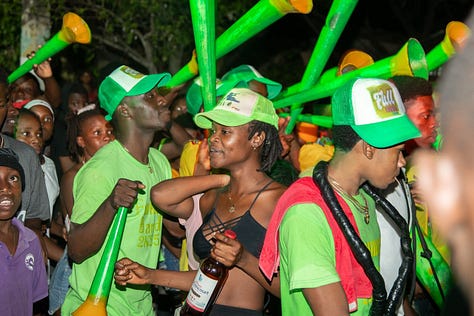
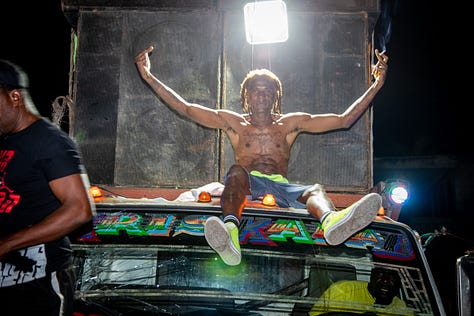
Frankétienne, a National Farewell to a Legend
On February 28, a state funeral was held at the Saint-Pierre church in Pétion-Ville to honor tribute to the memory of Frankétienne, writer, painter and author of Dézafi (1975), the first novel in Creole.
Numerous dignitaries were present, including the President of the Transitional Presidential Council and the Prime Minister.
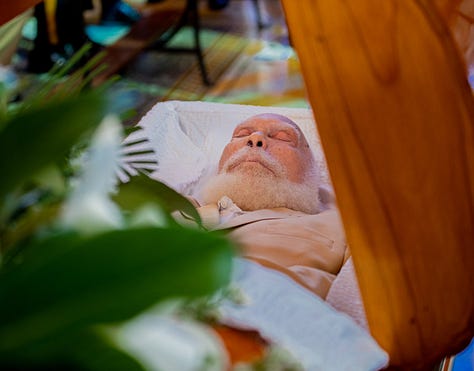
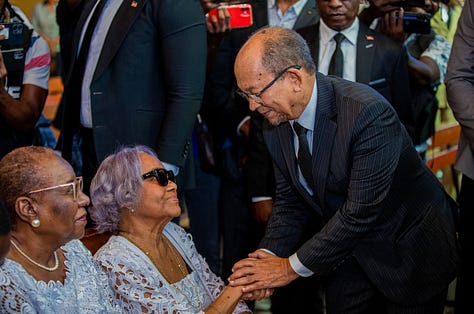
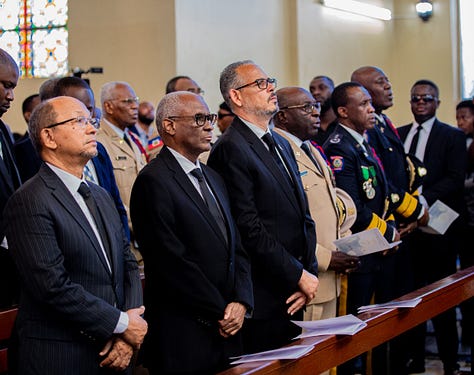


Music Video of the Week
Moun mwen - Mebel Brun
Unpretentious, the track Moun mwen - which translates as Part of My Team in English - has established itself as a catchy tune, seducing DJs and invading social networks since mid-February.
”If loving you is a crime, I'd like to be arrested on the spot" reads the first verse of this declaration of love, driven by an Afropop and Konpa-influenced rhythm.
“It's with you that I want to share everything,” Mebel Brun continues, before concluding with a heady chorus: “That's Moun mwen... I'm jealous for Moun mwen, I'm sensitive for Moun mwen, I love Moun mwen.”
Flee or Suffer: the Anguish of Port-au-Prince Residents
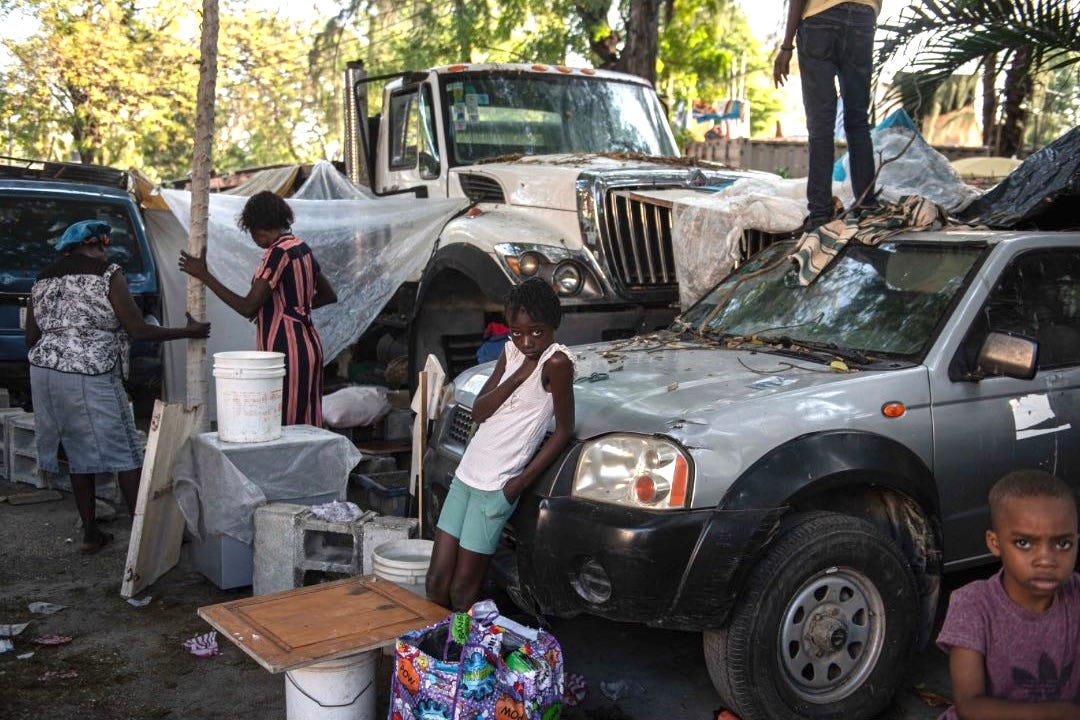
Residents of the last remaining unscathed areas of Port-au-Prince have become increasingly fearful. During the last two weeks of February, coordinated attacks by armed groups were reported in several neighborhoods simultaneously. Thousands of people were once again forced to leave their homes and wander the streets with their few belongings. Since February 14, at least 42,000 people have been forced to flee their homes, according to the International Organization for Migration (IOM).
The majority of the displaced come from Delmas 30, a neighborhood where attacks have continued unabated for the past three weeks. Other attacks were reported in Carrefour-Feuilles and Pernier, just outside Pétion-Ville. In Kenscoff, violence resumed after a two-week lull, with armed groups finally taking control of part of the main road. This strategic artery has been blocked again since Tuesday, making travel almost impossible.
At a Glimpse - A Summit for Haiti's Economic Future
On March 2, the Kenari 2025 Summit brought together a number of experts, including Etzer Emile and Marc Alain Boucicault, to discuss the challenges of education, financial inclusion, new technologies and international trade. Organized in partnership with the UNDP, the event attracted over 1,000 participants. Josué Visual, photographer and contributor to HAÏTI MAGAZINE, was invited to immortalize this day of exchanges.



DÈYÈ MÒN ENFO’s team
Photojournalists: Francillon Laguerre, Sonson Thelusma, Andoo Lafond, Milot Andris, Patrick Payin
Editorial board: Etienne Côté-Paluck, Jean Elie Fortiné, Jean-Paul Saint-Fleur
Interns: Wilky Andris, Donley Jean Simon
Special collaboration: Ketlain Difficile, Josué Visual, Siffroy Clarens, Stéphanie Tourillon-Gingras, Mateo Fortin Lubin
Media partners: Centre à la Une, J-COM, Nord-Est Info
Institutional partners: Kay Fanm, Mouka.ht
Special thanks to the Fonds québécois pour le journalisme international (FQJI) for its support.
How Does Your Contribution Help?
Your monthly support helps to finance the production and pay the salaries of the DÈYÈ MÒN ENFO staff in the communities of Cité-Soleil, Port-au-Prince and Cayes-Jacmel. In addition, donations are regularly distributed for medical expenses, school fees and other emergencies in these communities.
Press Reviews
Keep reading with a 7-day free trial
Subscribe to HAITI WEEKLY by DÈYÈ MÒN ENFO to keep reading this post and get 7 days of free access to the full post archives.




